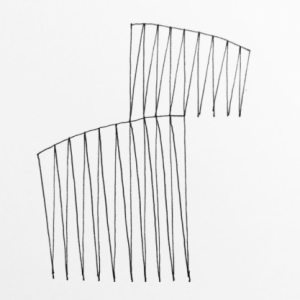Home › Forums › Weekly photo share › Week 2 photo share
- This topic has 5 replies, 6 voices, and was last updated 6 years, 7 months ago by
 ANGELA DANG.
ANGELA DANG.
-
AuthorPosts
-
October 4, 2018 at 1:11 pm #6
 Nadeen KharputlyKeymaster
Nadeen KharputlyKeymasterPlease submit your photograph and brief summary in relation to this week’s theme: civil rights today.
October 5, 2018 at 4:33 pm #8Anushka Rastogi
Member
This week’s topic is Civil Rights Today and this powerful picture, taken by Johnathan Bachman, of this woman really stood out to me. In Baton Rouge, she is both mourning the loss of Alton Sterling, a black man who was killed by the police, as well as protesting police brutality. I chose this picture because of the determined look on this woman’s face as these police officers try to come and get her. The way she stands her ground–her body language shows that she is not afraid of the police and she will be here until some change is made. There is no violence or anger or fear in her eyes. Her expression is stern, but peaceful, telling people to take her seriously as she fights for the rights for black people to be treated as humans.
October 8, 2018 at 10:24 pm #12Gabrielle Yagyagan
ParticipantThis picture, taken by L.G. Patterson, features NFL players of the St. Louis Rams protesting police brutality in response to the shooting of Michael Brown. After the event involving Brown, a widespread gesture that was used including raising your arms in the “don’t shoot” position. This image showcases the idea that black men are unjustifiably targeted and criminalized by law enforcement, taking away their humanity. In addition, the power structure between whites and people of color cemented in our everyday lives, and the lack of accountability on law enforcement, reveals the severe issues that people of color, especially the black community, faces daily, giving activists a motive and the empowerment to advocate for black humanity, as seen in this image by professional athletes.
Attachments:
You must be logged in to view attached files.October 8, 2018 at 11:13 pm #14ALEXANDER GARCIA
ParticipantThis photo captures the image of activist DeRay Mckesson being arrested as a result of the manner of his protesting. DeRay Mckesson and other activists were raising awareness to the public of the death of Philando Castile who was shot and killed by a police officer. The scene in which the photo captures conveys a sense of seriousness and intensity as multiple officers and their respective vehicles are visible. This aspect of the photo is noted because it delivers the message that participation in protests can lead to altercations and detainment with the police. Even in the face of peaceful protests, individuals may face prosecution by police officers. The relevancy of the photo to this theme of the week is rooted in the fact that this photo demonstrates an individual fighting for policy change. It was taught in class today that the courts only recognize rights or policy once they have been fought for. What Deray Mckesson is doing is exactly that, he is fighting for change. With respect to the ownership of the photo, the individual who took this photo couldn’t be identified; nonetheless, the subsequent link has been provided to the source of the photo (https://newsela.com/read/freeways-civil-rights/id/19705/).
Attachments:
You must be logged in to view attached files.October 10, 2018 at 8:22 pm #16KARINA BOYCE DE CASTRO
ParticipantIn the far right of this picture (and of the politcal spectrum) we can see Wilson Witzel, first round winning candidate for governor in Rio de Janeiro and ally of Bolsonaro. In the image, Witzel and his supporters can be seen after bringing down and tearing apart the sign of the street named after Marielle Franco. Marielle was a black, gay women from the favelas of Rio. She was a politician and an activist who fought for the rights of minority groups. In March 2018, she was murdered and up until now no answer has been given to “Quem mandou matar Marielle?” (“Who ordered the killing of Marielle?”)
I believe its extremely important that the world sees the situation that Brazil is putting itself into. The United States has been through it with the Trump elections, the UK followed the same path with Brexit… Is Brazil really going to be next? Everything indicates that “yes”. Election after election Brazil has been able to surprise me with its results. Actually, I believe the correct word would be “disappoint”. This one hasn’t been different… As a result, the country has been constantly going through protests. The most recent movement is called “ele nao” (”not him”), which is a movement against the first round winning candidate Jair Bolsonaro. This candidate represents a big step back for many minority groups who fought many years for their rights. In his speech, Bolsonaro defends “machista”, homophobic and racist ideals. The candidate, which will probably be the future president of Brazil, also defends the 1964-85 Brazilian military dictatorship and worships figures such as Coronel Brilhante Ulstra, who was a colonel during the 1964-85 period and who tortured former president Dilma Roussef. Many things have been going wrong in Brazil lately… never have I seen the country so politically divided and never have I seen the amount of hate being spread towards minority groups. The situation has become so bad that people have been beat up and even killed by simply wearing a sticker or a t-shirt from the campaign “ele nao” (“not him”). Only this week, Moa do Katende was killed with 12 knife stabs and a woman got a swastika drawn on her stomach with a switchblade – amongst many other cases. I imagine what civil rights activists such as Martin Luther King would think of the situation we are living in nowadays? I dream that one day countries will reunite and end all this hate speech and intolerance. Hate is not the solution. Lets not allow candidates which represent these ideals rise into power.</span>
-
This reply was modified 6 years, 7 months ago by
KARINA BOYCE DE CASTRO.
Attachments:
You must be logged in to view attached files.October 11, 2018 at 10:33 am #22 ANGELA DANGParticipant
ANGELA DANGParticipantI’ve decided to attach a picture of the Standing Rock protestors as part of this weekly share. The DAPL protests are one of the best examples I can provide that truly embody the fight for civil rights and a right to livelihood. At the core of this movement (and other movements such as Black Lives Matter and March for Our Lives) is both a demand to be recognized as human beings, whose inherent natures as human beings should entitle them to basic rights and equal treatment, and a demand to have their livelihood protected by a government that has routinely denied them protection and even advocated for their removal.
What’s significant about the DAPL protests is that they are not only advocating for their right to access a clean water source, but also advocating for the protection of a source that has traditionally been sacred to them. It begs the question of who is afforded protection and rights under the law and who has the freedom to practice their religion and customs with no constraints. Historically, these rights have only been granted to white, land-owning men. With the Standing Rock protests, we’re forced to ask ourselves how we reconcile that history with demands to grant these same rights and protections to groups that have been denied them in the past.
Attachments:
You must be logged in to view attached files. -
This reply was modified 6 years, 7 months ago by
-
AuthorPosts
- You must be logged in to reply to this topic.
